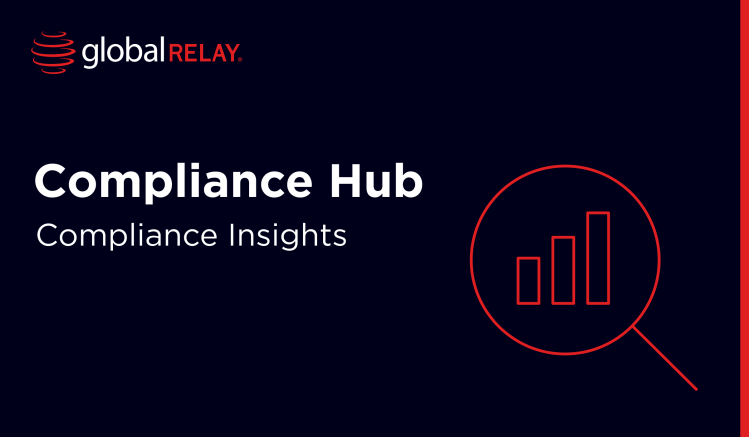Written by a human
In brief:
- Financial data silos expose firms to severe regulatory penalties and audit delays
- Disconnected systems drain resources through manual reconciliation and error-prone processes
- Integrated governance solutions eliminate vulnerabilities while streamlining compliance operations
The hidden cost of regulatory blindness
When regulators come knocking, financial firms discover their greatest weakness isn’t market volatility, but their inability to quickly access unified data across multiple systems.
When trading records, client communications, and compliance documentation exist in separate platforms, firms struggle to meet regulatory demands for complete and timely information during audits and investigations.
Financial data silos create dangerous gaps that transform routine Financial Regulatory Authority (FINRA) audits into prolonged ordeals and Securities Exchange Commission (SEC) investigations into costly nightmares.
FINRA’s enforcement actions consistently target firms of all sizes with inadequate record-keeping systems. Recent FINRA penalties demonstrate how fragmented data systems lead to significant financial consequences.
The ripple effects extend beyond immediate penalties. In fact, compliance data integration failures create cascading problems that include:
- Incomplete regulatory filings that trigger additional scrutiny
- Extended audit timelines that drain internal resources
- Damaged relationships with regulators who question data integrity
- Increased examination frequency as firms get put on regulatory watch lists
Under GDPR requirements, European financial firms face even steeper consequences. Data fragmentation makes it nearly impossible to respond to data subject access requests within the mandated 30-day window, exposing firms to fines reaching 4% of annual revenue.
The operational nightmare of disconnected systems
Behind every missed deadline and compliance failure lies a frustrating reality. Imagine teams spending countless hours manually stitching together information from disparate systems, and email archives that don’t communicate with CRM platforms. Envisage trading systems that operate in isolation from compliance databases, and risk management tools can’t access real-time data from client onboarding systems. This is the reality for many firms, despite there being solutions on the market that address this specific problem.
Fintechs, for example, lose significant resources to manual reconciliation because their financial systems can’t automate these processes. This saps employee time, pulling them away from more strategic initiatives, with company growth often being the casualty. Not only that, but during regulatory reporting periods, compliance teams often spend the majority of their time gathering data from different sources rather than performing actual analysis.
This results in significant operational toll affecting multiple areas of the organization:
- Manual data extraction that introduces human error at every step
- Delayed decision-making as teams wait for complete information
- No single source of truth
- Duplicated efforts across departments working with the same underlying database
- Increased labor costs as specialized staff perform routine data gathering task
- Missed business opportunities while teams focus on administrative task
This fragmentation becomes particularly dangerous during market stress events when rapid response capabilities separate successful firms from those facing regulatory action.
When every minute counts, outdated systems become bottlenecks that prevent timely risk assessment and reporting. Yet modern data silo compliance platforms are specifically designed to eliminate these delays through automated data aggregation.
Security vulnerabilities in fragmented environments
Aside from the obvious issue that data silos complicate compliance, they also create security vulnerabilities that multiply exponentially across disconnected systems. Some firms fail to realize that each isolated database represents a potential entry point for cybercriminals, while inconsistent security protocols across platforms create weak links that threaten entire organizations.
Data security incidents frequently stem from inadequately secured legacy systems that maintain client information without modern protection standards. One report from 2023 found that financial fraud is costing the U.K. £219 billion a year.
These costs are often exacerbated by fragmented security protocols across disconnected systems. When firms invest heavily in securing primary platforms while overlooking older systems containing sensitive data, they create vulnerabilities that cybercriminals actively exploit.
Importantly, regulatory data governance becomes nearly impossible when data lives in multiple locations with varying security standards. Privacy regulations like the California Consumer Privacy Act and GDPR require firms to demonstrate comprehensive data protection across all systems, but siloed environments make this incredibly difficult if not impossible to achieve or verify. Consequently, GDPR data consolidation efforts often fail when organizations can’t locate all instances of personal data across fragmented systems.
The security challenges multiply across several dimensions:
- Inconsistent access controls that create unauthorized data exposure
- Multiple authentication systems that weaken overall security levels
- Difficulty tracking data lineage for compliance and audit purposes
- Increased attack surface area as hackers target the weakest system links
- Challenges implementing data retention and deletion policies uniformly
How integrated governance solutions are the path forward
Unified governance platforms offer a clear path out of the data silo trap by creating single sources of truth that eliminate fragmentation while enhancing security and compliance capabilities. But these solutions don’t just connect existing systems; they fundamentally transform how financial institutions manage, protect, and leverage their data assets.
Modern integrated compliance solutions provide several key advantages through compliance system integration, namely:
- Centralized data capture that automatically pulls and archives information from all relevant systems, enabling financial data centralization
- Real-time, AI-driven compliance monitoring that identifies potential issues before they become violations
- Automated reporting capabilities that eliminate manual data gathering and reduce error rates
- Enhanced security protocols that apply consistent standards across all data sources
- Audit trail functionality that provides complete visibility into data access and modifications, improving data governance efficiency
The transformation extends beyond compliance efficiency. Firms implementing financial data unification strategies report significant improvements in decision-making speed, risk assessment accuracy, and client service capabilities. When data flows seamlessly between systems, teams can focus on analysis and strategy rather than administrative tasks.
Plus, FINRA data compliance becomes straightforward when all relevant information lives in a centralized, searchable environment. Regulatory requests that previously required weeks to fulfill can be completed in days or hours. This is important for demonstrating to regulators that a firm maintains proper oversight and control.
Breaking free from silo constraints
As well as being technical inconveniences, financial data silos represent strategic barriers that prevent firms from achieving their full potential, while simultaneously exposing them to unnecessary risks. The cost of maintaining fragmented systems extends far beyond compliance penalties to include operational inefficiencies, security vulnerabilities, and missed business opportunities.
Secure data integration through unified governance platforms offers a proven solution that addresses these challenges while positioning firms for future growth. Organizations that eliminate data silos improve compliance outcomes and create competitive advantages through enhanced agility, better risk management, and superior client service capabilities.
Final thoughts
The question isn’t whether financial institutions can afford to implement integrated governance solutions, it’s whether they can afford to continue operating with dangerous data fragmentation that threatens their regulatory standing and business success.
Ready to eliminate data silos and transform your compliance operations? Book a demo from Global Relay or explore our resource hub to discover how unified governance can revolutionize your financial data management approach.

